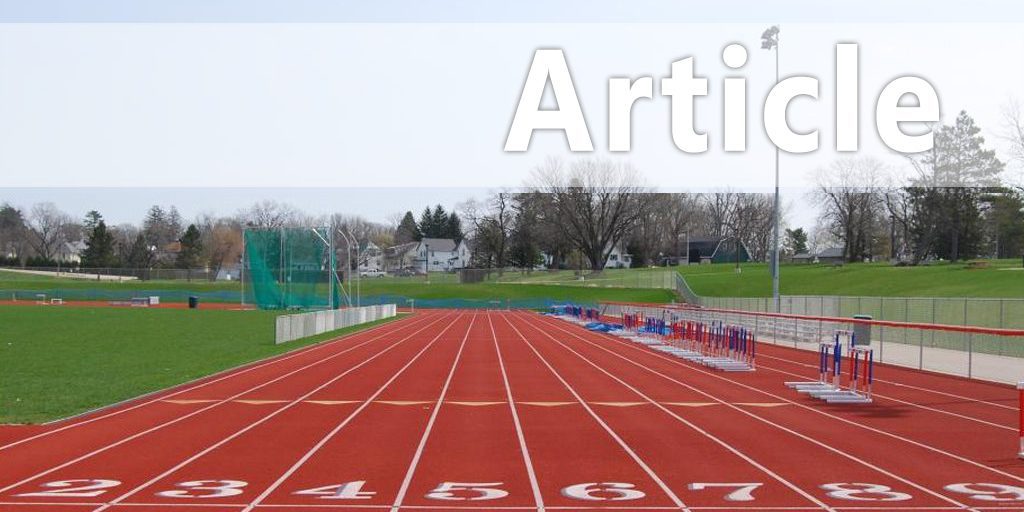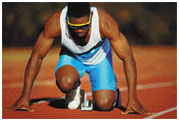|
Starting Blocks (4-Point Start)
First and foremost, please remember that prior to running, stretch out as much as possible. This is crucial and will help prevent long-lasting injuries. Sprinters are subjected to leg injuries more than distance runners since they are so explosive. Hamstrings are the first to go and they take almost a year to fully heal. Run safe and run smart! Starting block work is considered the most important tool in sprinting events. Many novice sprinters are anxious with starting block work. It definitely is a tool that doesn't allow much room for error; however, once perfected it will indeed help the athlete with speed development. The shorter the race, the more the sprinter needs to rely on his or her starts. I have included a few steps to help make this transition a bit easier. 1) Block Setup - Make sure the front of the starting block is about a foot behind the starting line. This will allow you to have a set distance so each start will be the same. The runner must then establish his or her power leg versus the lead leg. Power Leg - This it the leg that is closest to the starting line that generates 100% of the forward momentum. An easy way of determining this is to stand behind the athlete and simply push them forward. Whichever leg catches their weight is the power leg. Lead Leg - This is the back leg that is farthest from the starting line. It swings forward and should land about 2-2 ½ feet past the starting line. As far as the pedals, there are many different variables affecting where they should be set, but ideally COMFORT comes first. Remembering the setting is very significant for the runner. Everything revolves around the word "routine". 2) Establish a routine - Nothing too involved but something you are accustomed with. This gets you completely focused on the event, basically telling your body that this is the time to excel. (e.g. quick sprint out, shake your arms and legs a number of times, dual leg butt-kicks, etc.) 3) Runners on your marks - I would suggest always backing into the blocks. This will loosen the hamstring and calves prior to the race. Consider this a recoil function as you retract into the blocks ready for the start. 4) The "Set" Position - Once you back into the blocks, your Power Leg should be around 90 degrees and your Lead Leg should be about 130 degrees. Your thumbs and forefingers should be the only part of your hands on the track, anything more would jeopardize too much weight spread out on the track surface. Hands should be equal distance apart and shoulder width. I would suggest having the shoulders slightly roll-over your hands meaning they should be parallel to the starting line. Obviously, with these calculations, your hips should be above your shoulders. Once the starter's pistol goes off, the Lead Leg and arm on the same side of the body drives OUT and not UP. Keep in mind the 2-2 1/2 foot marking that the Lead Leg should reach. If the athlete is familiar with this in practice they will be comfortable enough to automatically drive forward. As far as form, I always told my athletes to picture themselves as a plane during lift off. The body should start off angled and gradually become perfectly upright. You should never let your body swing from either leaning too far forward or too far back. 5) Reaction Time - A great tip on helping with reaction time off the block is as simple as grabbing (2) 2x4 pieces of wood. A coach or fellow athlete calls out the start and claps the 2 boards together, mimicking the starting pistol. Repeat this every practice and you will definitely see improvements.
|







